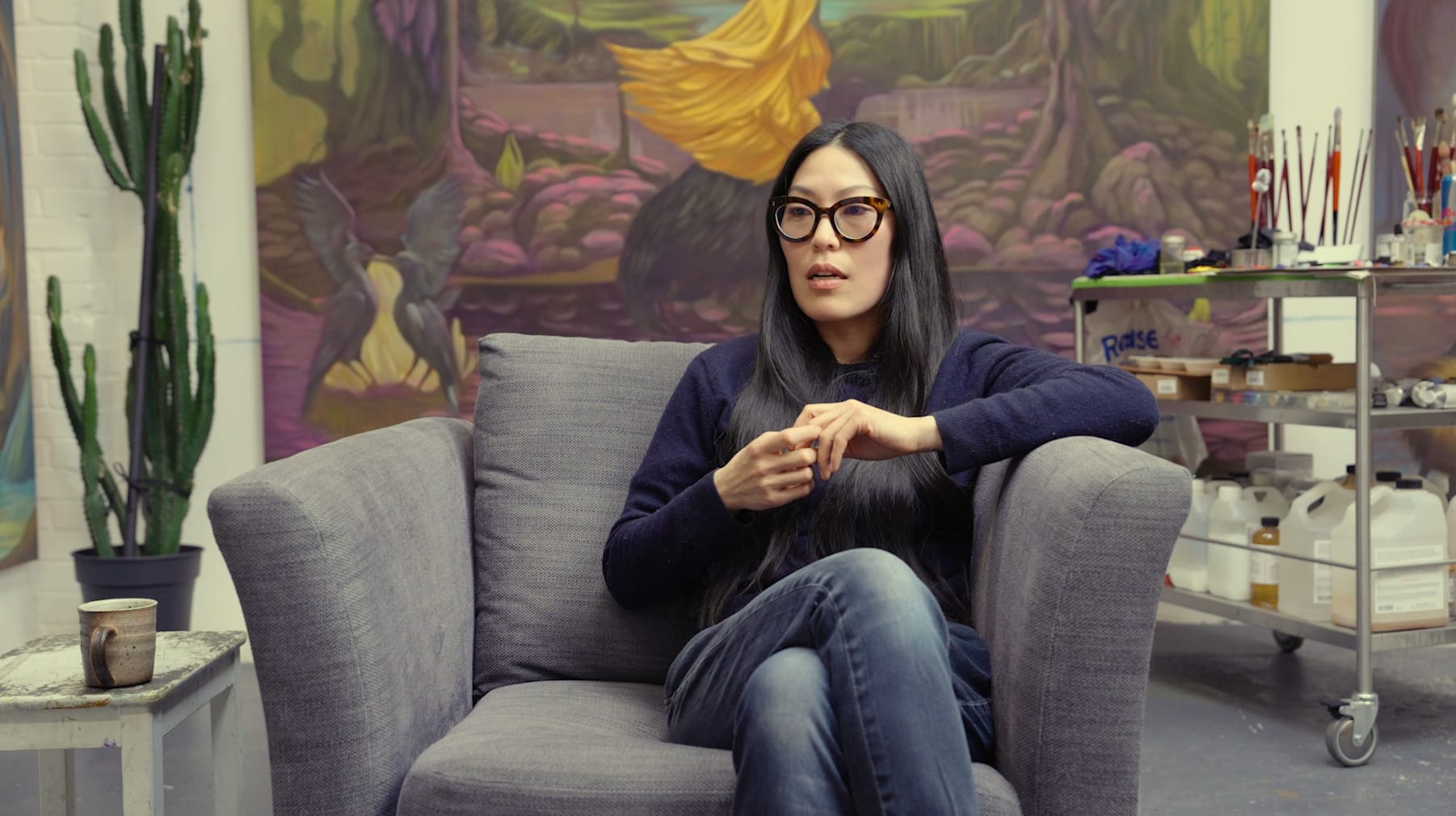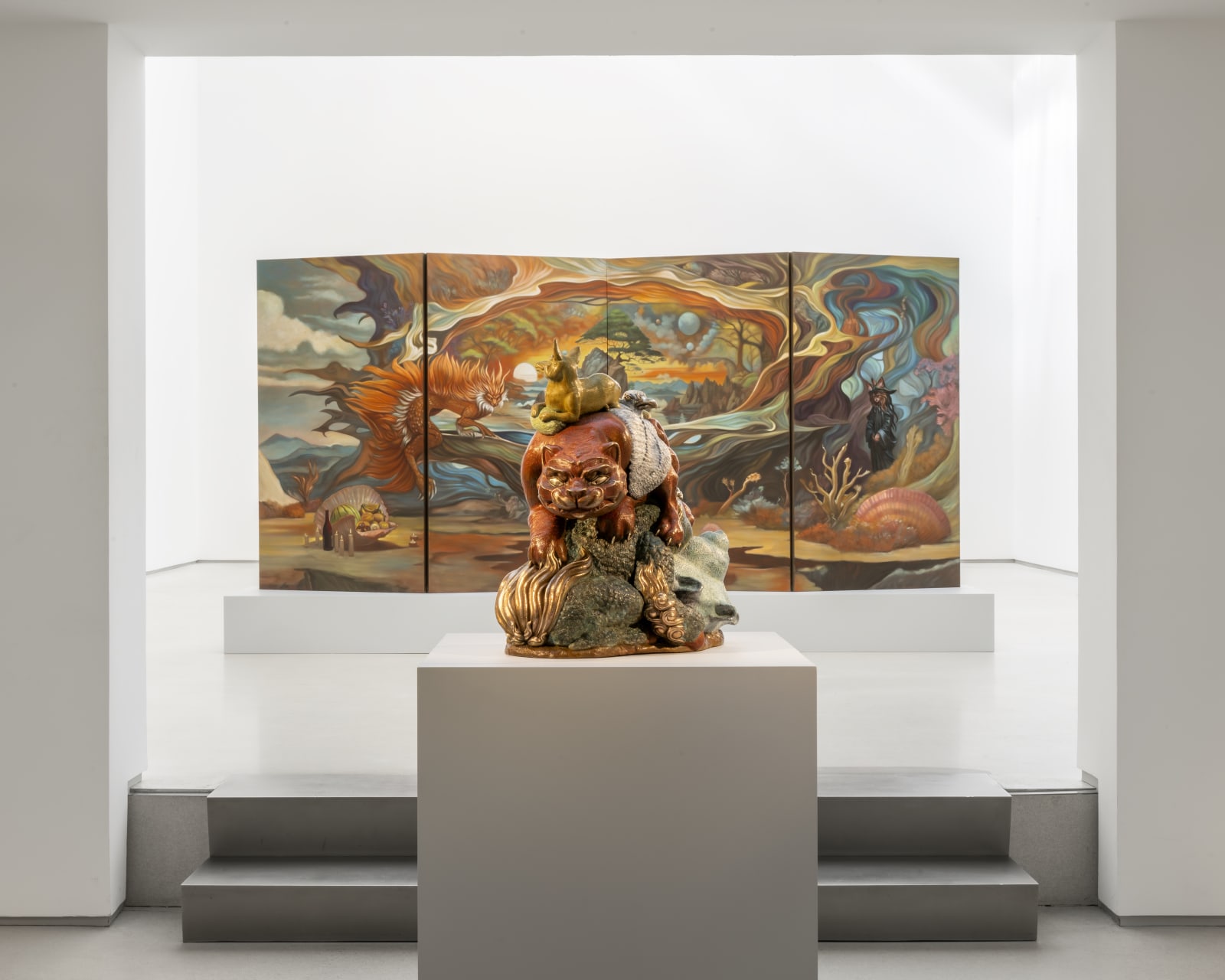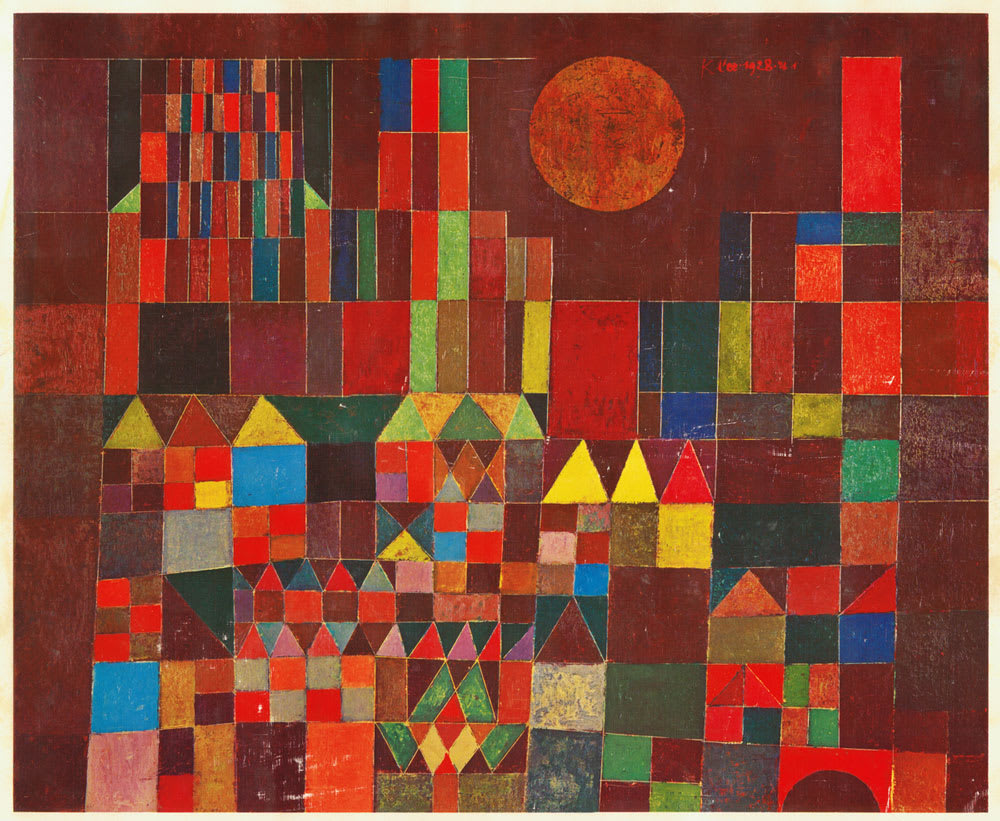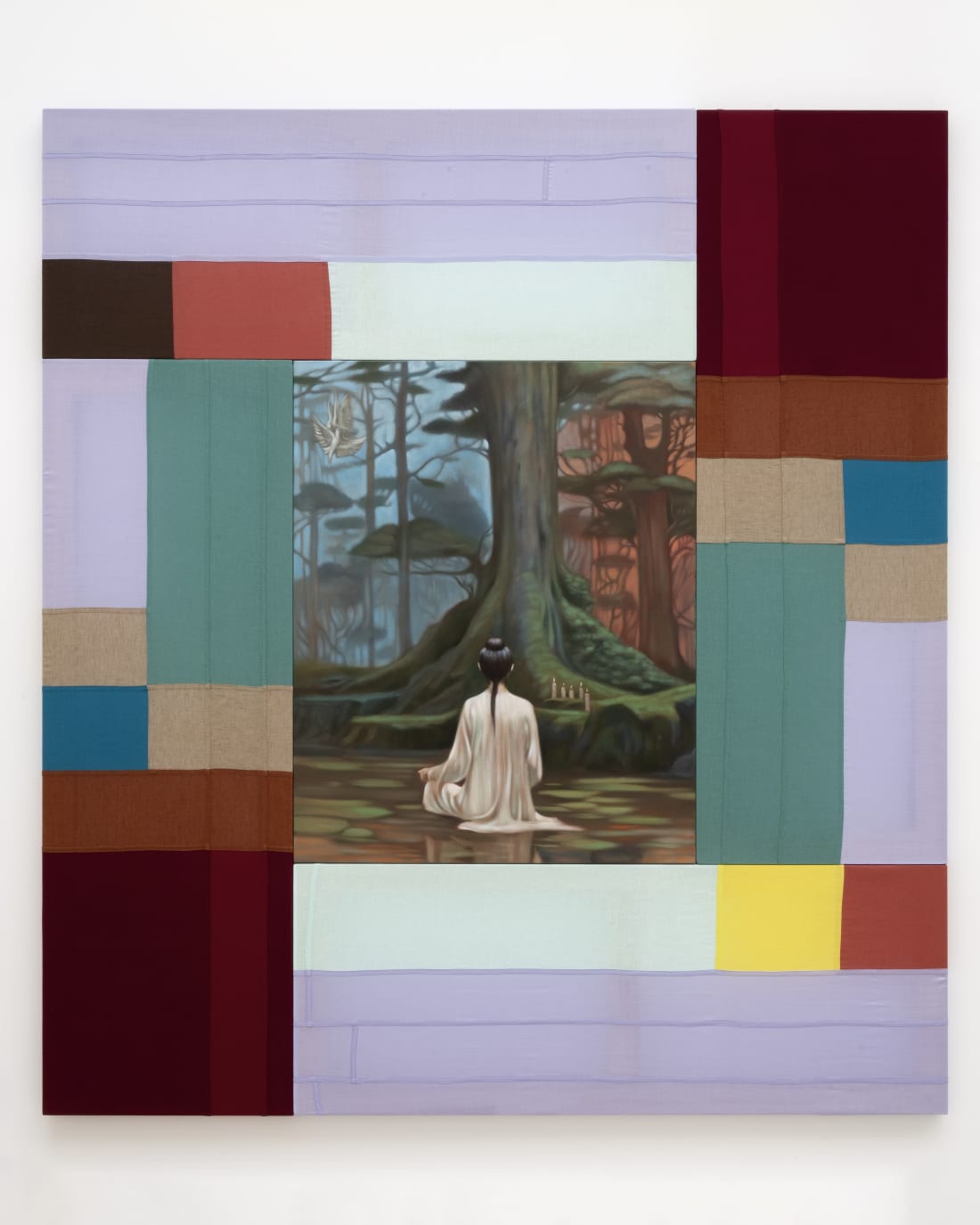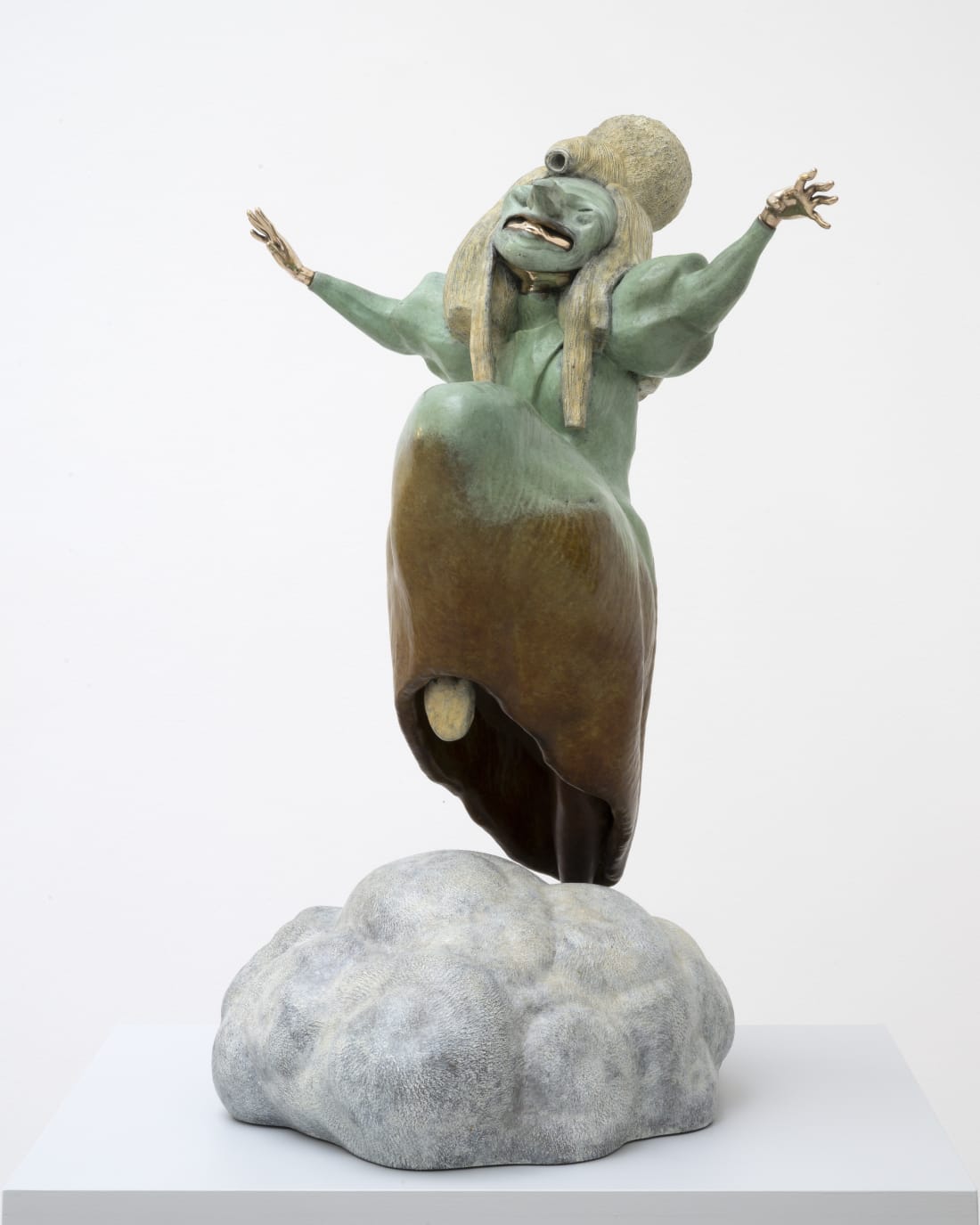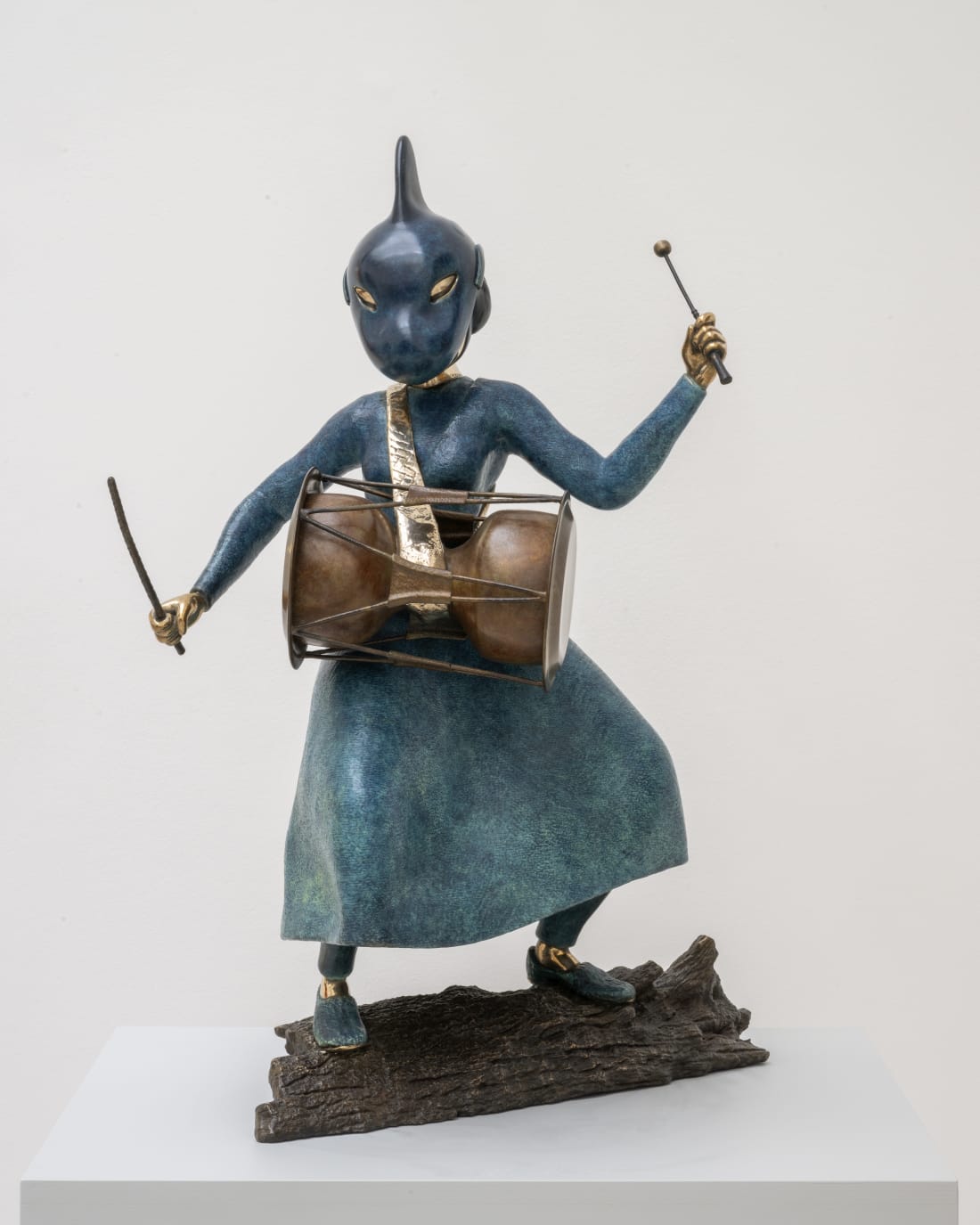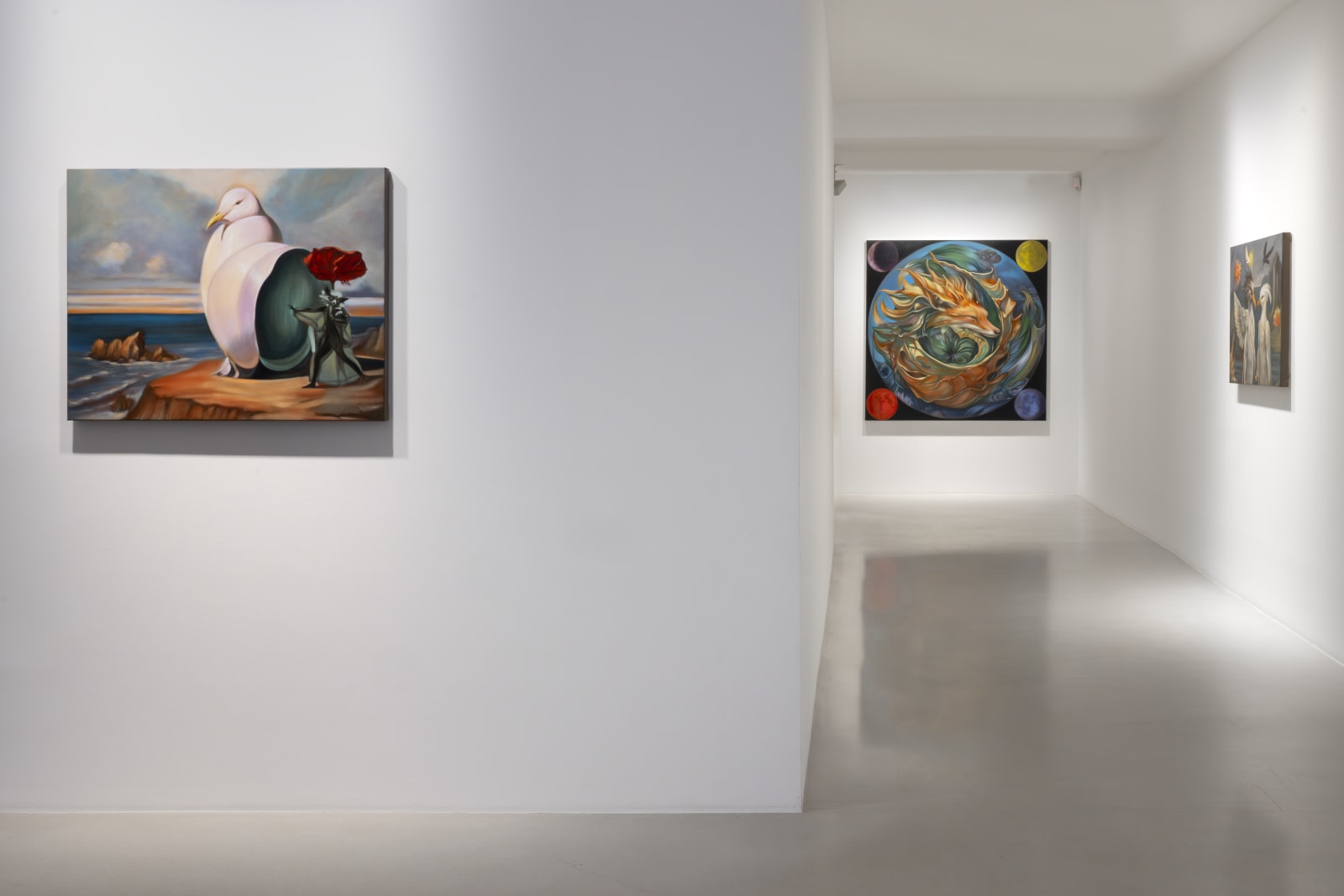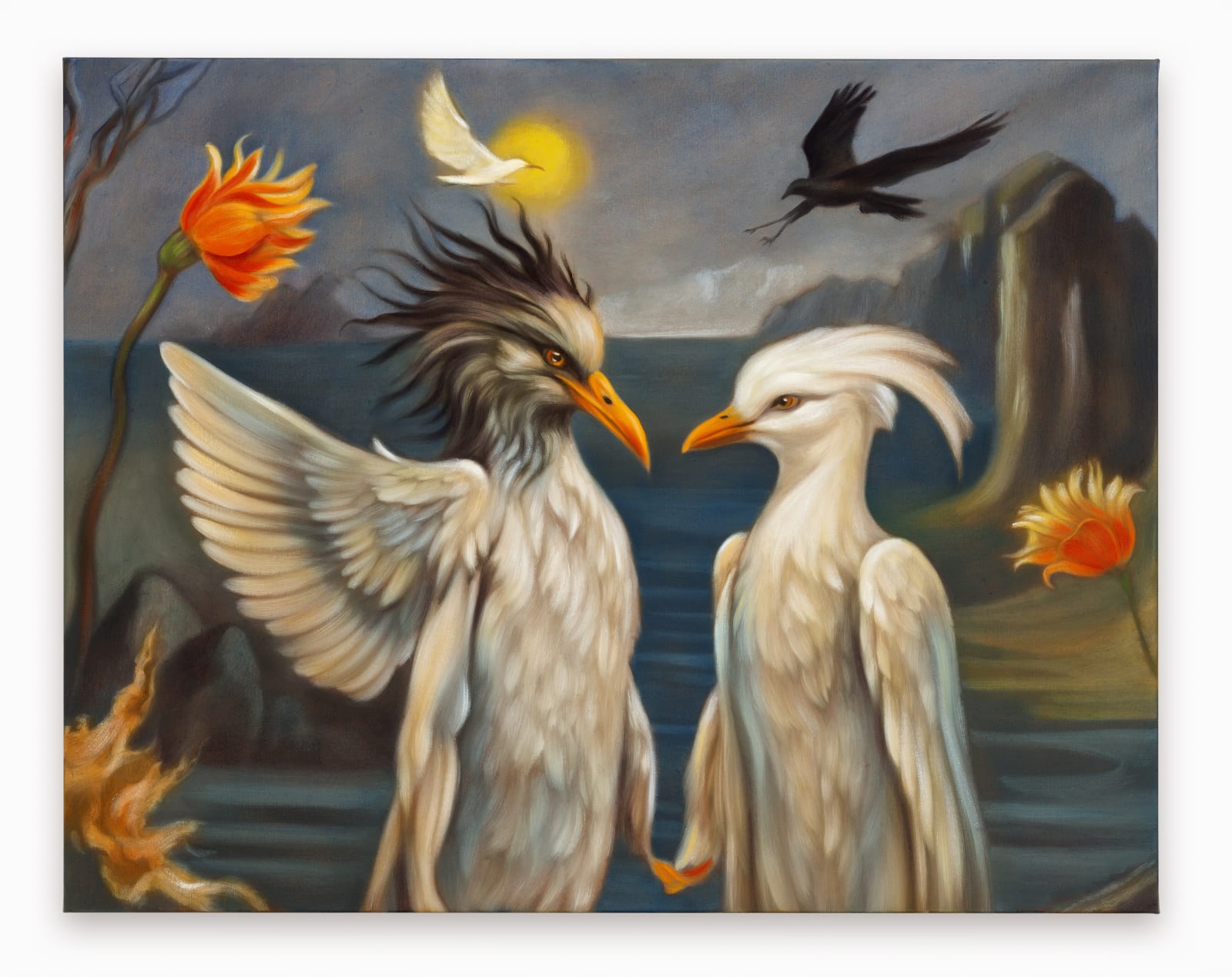I think of every exhibition as an installation and almost as one whole work. I think really, really deeply about what each image is going to be and where everything is going to lay in the space. They always have to have a relationship to one another, you understand that those things might be happening in conjunction or parallel to one another. So this idea of nonlinear time is important to me, and this idea of different worlds happening at the same time, of journeying, whether that’s to different worlds, the underworld, a psychological liminal space. — Zadie Xa

This exhibition is the artist’s first in France. Tying it to the art-historical landscape of its surroundings, Xa cites Odilon Redon and Gustave Moreau, painters of the Parisian Symbolist movement in the late 19th century, as inspirations for her new group of paintings. ‘I’ve always been interested in semiotics and signs and symbols’, the artist explains, but the fantastical pastoral scenes in these new works betray this particular influence.
Odilon RedonLe Jour, 1910
Abbaye de Fontfroide, Narbonne


Bojagi are made by patchworking scraps of fabric: often silk. Though inspired by traditional Korean techniques, the artist replaces the typical materials with fabrics that have gained popularity much more recently, such as the denim used in the outer layer of this work, referencing the fashion trends familiar to the artist from her upbringing in Canada. Xa’s use of such fabrics in her textile works materialises her exploration of diasporic identities by addressing the role of fashion and of fabric choices in self-presentation.
Vancouver Shoreline, 2024Sewn fabrics and wooden rod
130 x 170 cm (51.18 x 66.93 in)


As the artist explains, the exhibition has at its heart ‘my indulgence in my desire to illustrate new worlds’, situated at the intersection between near and far, real and fantastical, lived and longed for.
Buffalo Gals, Won't You Come Out Tonight, 2024Oil on linen
200 x 180 cm(78.74 x 70.87 in)


The foxes, crows and seagulls that weave in and out of the exhibition are drawn from the artist’s urban reality, while other characters – cloaked figures with birds’ heads or feathered tails – are imagined hybrids. For Xa, animals carry abundant allegorical power, just as they do in Korean folklore and mythology, which also offers the artist a rich pool of creatures and characters with which to people her paintings. ‘I feel like those symbols hold genuine power and magic when placed within the ecosystem of my work,’ says Xa.
Knowledge Seeker, Soothsayer, Great Grandmother, 2024Oil on linen
200 x 250 cm (78.74 x 98.43 in)

I seem to have this fixation with power and the ordinance of what society society has constructed as who yields that. I think for me, there's always been a real interest in figures who are considered outcasts in society. This is why there is such an interest towards very specific city animals or people who have been sidelined or marginalized in history and whose stories we don't always readily know about. — Zadie Xa


